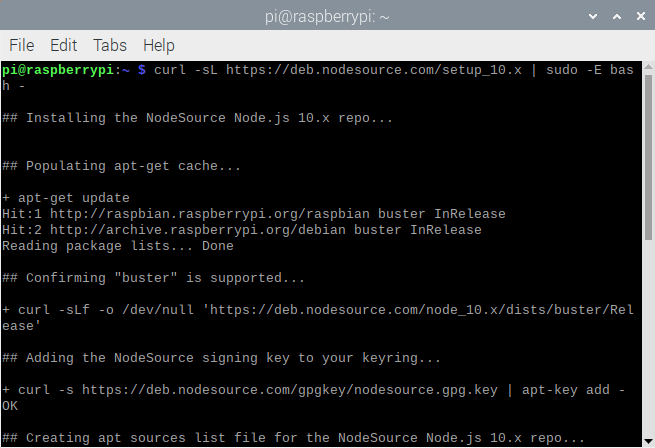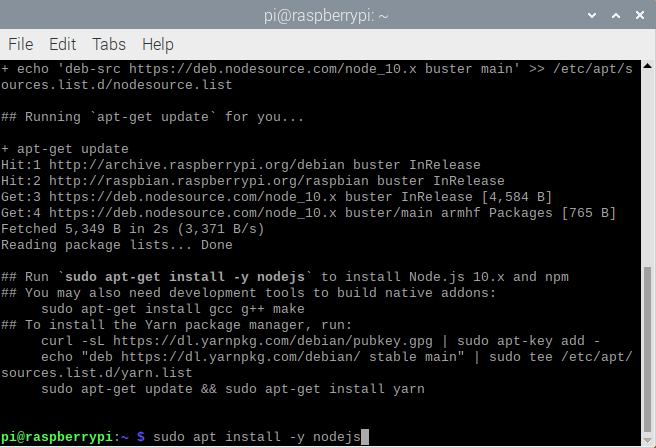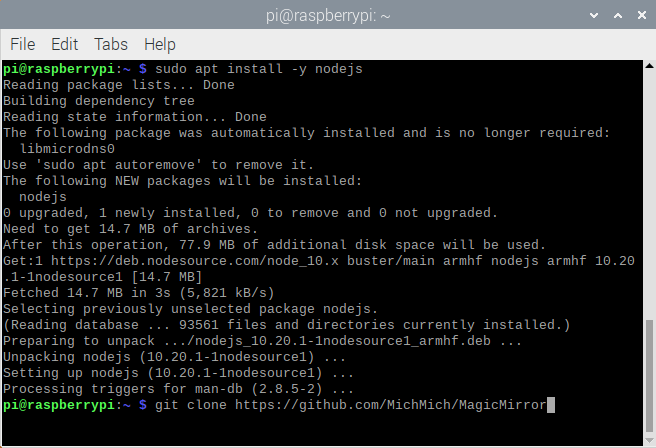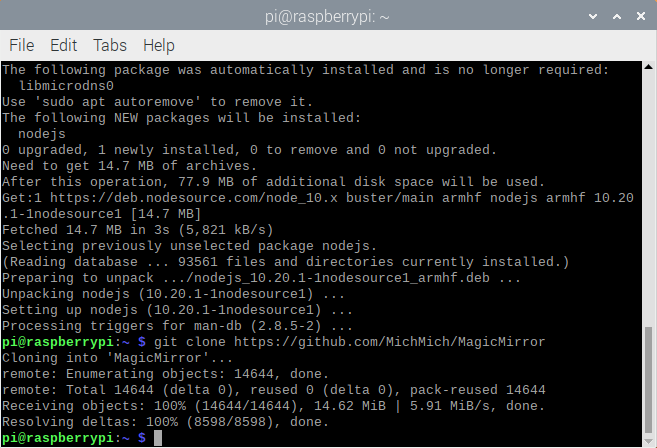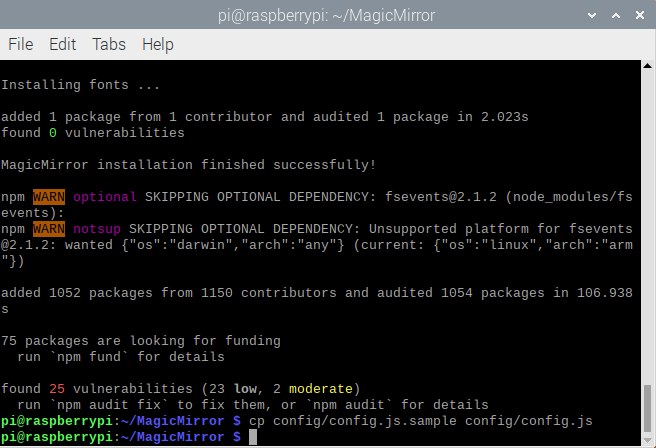How to Make a Magic Mirror with Raspberry Pi
Installing Magic Mirror
If you've followed along with the Raspberry Pi 4 Kit Hookup Guide, you should have a functioning Raspberry Pi desktop in front of you. Now we can move on to the "magic"!
Installing Magic Mirror
The basic installation is relatively straight forward. We'll run through the steps here, but you can also head over to the Magic Mirror Installation & Usage tutorial and follow their steps.
Install NodeSource
We first need to install NodeSource. Open a terminal window on your Raspberry Pi desktop. Then copy and paste the following code:
language:shell
curl -sL https://deb.nodesource.com/setup_10.x | sudo -E bash -
If all goes well, you should see something like the following:
Install NodeJS
The next thing we need is NodeJS. Copy and paste the code below into your terminal window:
language:shell
sudo apt install -y nodejs
Installing NodeJS....
Clone the MagicMirror GitHub Repo
Now we get to the good part! Let's clone the MagicMirror GitHub repo to our Raspberry Pi. Copy and paste this code to your terminal and watch the GitHub clone magic happen....
language:shell
git clone https://github.com/MichMich/MagicMirror
Away we go!
Install Magic Mirror
We're close! Go ahead and cd (change dir) into the MagicMirror directory:
language:shell
cd MagicMirror
And then we type in the following:
language:shell
npm install
Copy the Sample Config File
So close! Let's copy the sample config file into one we can play around with:
language:shell
cp config/config.js.sample config/config.js
Run the Sample Config
Okay! Let's make this magic!
language:shell
npm start
